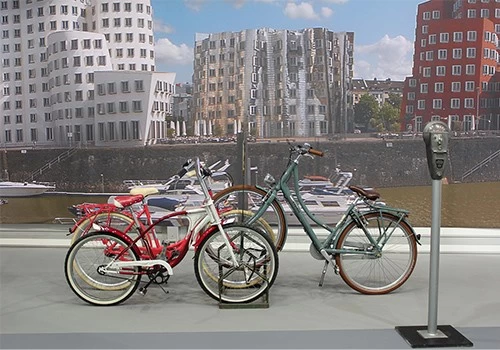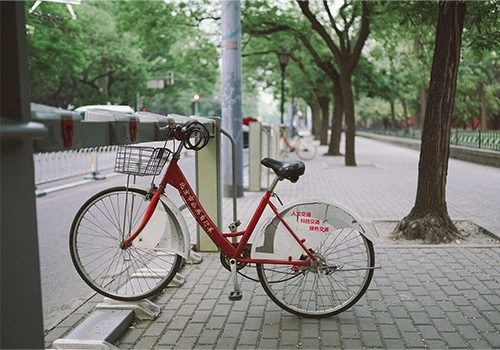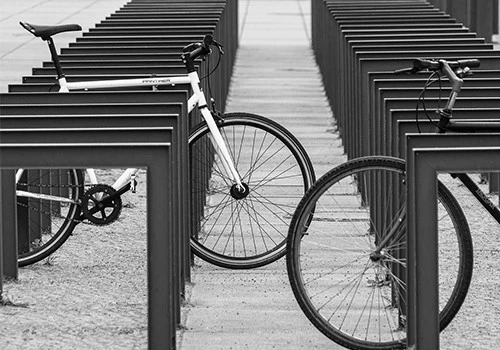Specifications
Model Number : PV-SC-001
Type: Bike parking and storage
Color:Yellow,Black,Green,Red,or Customized.
Style : both indoors and outside
Material : carbon steel
Loading: According to customer need
Size :195*23.2*75cm,200.55*23.2*75cm,or Customized.
Finish: hot-galvanized
Specifications
Model Number : PV-0081-01
Type: Bike parking and storage
Color:silver
Style : both indoors and outside
Material : carbon steel
Loading: According to customer need
Size :Height 1463mm, Depth 1114mm
Finish: hot-galvanized
Model Number : PV-0081-01
Type: Bike parking and storage
Color:Black
Style : both indoors and outside
Material : carbon steel
Loading: 2-10 bikes (According to customer need)
Size :Height 1463mm, Depth 1114mm
Finish: hot-galvanized
Model No.: PV-H1
Size: w605*D400*H330mm
Specification: Round tube:¢16*1.2mm
Finish: Power coated
Net Weight: 1.6 kgs
Packing size:6pcs/ctn
MOQ: 100pcs
Model Number : PV-0024-01
Material : carbon steel/stainless steel
Loading: according customer space size,we can design according the size
Size : W1977*D1130(depend on your parking space)*H2500mm
Finish: Powder coated ,hot-galvanized/electric polish
Packing size :2000*2000*2500mm(40 parking space )
Powder coated ,hot-galvanized/electric polish
Product number:PV-0046-01
Material:carbon steel
Specification:10.2*59*28CM or Customized.
MOQ:100PCS
Port:Shanghai
Trademark:PV
Model Number : PV-0081-01
Type: Outdoor Bike Parking Rack
Style : both indoors and outside
Material : carbon steel
Loading: 2-10 bikes (According to customer need)
Size :170.5*116*148CM
Finish: hot-galvanized
Model Number : PV-0055-01
Type: compact flat pack /slot
Color:black / silver /yellow/optional
Style :Outdoor/indoor
Material : carbon steel/ stainless steel
Capacity : park 6 bikes
Size : L1400*W1054*H840mm
Net weight :38KG
Finish: powder coating / hot galvanized /elctropolishing
Packing size :1490*860*160mm 1pcs/ctn
Product Name: Multi-Capacity Horizontal Two Tier Bike Parking Rack
Material: Carbon Steel
Finish: Powder coated
Post: 80mm * 80mm thickness: 3mm
Steel plate: thickness: 2mm
Dimension: 1325*1890*1830mm
Weight: 370 kg/set
Model: PV-0067-01
Material: stainless steel 304
Pipe: 50 mm* 2.5 mm
Size: 900*700 mm(L*W)
Surface treatment: polishing

Bike Racks are an essential part of the infrastructure in cities that encourage cycling. As cycling continues to grow in popularity due to its environmental benefits, health advantages, and economic savings, bike parking solutions are becoming increasingly important. These racks provide a designated and secure space for cyclists to park their bikes safely and conveniently. However, to maintain their functionality, appearance, and longevity, bike racks require regular maintenance. Proper upkeep ensures the racks continue to serve cyclists effectively and provide a reliable service over time.In this article, we’ll explore the importance of regular maintenance for bike racks, highlight common issues they face, and discuss maintenance strategies and best practices to extend their lifespan. We will also explore the benefits of keeping bike racks in optimal condition for both users and urban spaces.
Bike racks are primarily designed to ensure the safety and security of parked bikes. However, over time, various factors can compromise their security. Corroded or weakened metal parts, loose fasteners, and bent frames are all risks that can affect the rack’s functionality. If left unattended, these issues can make it easier for thieves to steal bikes or cause a bike to fall over, damaging the bike or causing injury to other users.
One of the main reasons to regularly maintain bike parking racks is to ensure that they remain secure and stable. If a rack is unstable or easy to manipulate, cyclists may hesitate to use it, or worse, may choose not to park their bikes at all. Ensuring that bike racks remain in good working order through routine inspections and repairs directly impacts the safety and security of bikes.
The Impact of Security Risks:
Regular maintenance practices such as inspecting the structure for weaknesses, tightening loose bolts, and replacing broken components help reduce these risks. A well-maintained bike rack is less likely to be damaged and, by extension, less likely to cause issues for cyclists.
Bike racks represent a long-term investment in public infrastructure. Cities or private organizations that install these racks typically aim to provide a lasting service to the cycling community. However, neglecting to care for these racks could result in faster wear and tear, leading to more frequent repairs or replacements. The cost of ongoing repairs or the need for replacing a bike rack prematurely can be significantly higher than performing simple maintenance.
Cost Savings through Maintenance:
Cities or organizations that prioritize maintenance reduce the need for expensive replacements and can allocate funds more effectively to other areas of urban cycling infrastructure. Maintaining racks is a smart, cost-effective solution that ensures the facilities continue to meet the needs of the community.
Urban spaces are often designed with a particular aesthetic vision in mind. Bike racks, particularly those located in public areas, contribute to the visual character of the space. When bike racks are rusty, dirty, or damaged, they can detract from the overall aesthetic of the surrounding area, creating a negative impression of both the bike racks and the space in which they are located.
Aesthetic maintenance is particularly important in high-traffic public spaces, where bike racks are visible to many people. Well-maintained racks, on the other hand, provide a sense of care and thoughtfulness, contributing positively to the environment. Regularly cleaning and fixing damaged components is essential to ensure bike racks remain visually appealing.
Aesthetic Impact:
Cyclists and pedestrians alike appreciate the visual appeal of well-kept bike racks, which contribute to a welcoming, modern, and environmentally conscious atmosphere. By caring for the racks’ appearance, cities can enhance the overall appeal of their public spaces.
One of the main goals of providing bike parking is to encourage more people to use cycling as a mode of transportation. Cyclists are more likely to feel comfortable and confident using bike parking facilities when the racks are clean, secure, and functional. If racks are in poor condition, cyclists may avoid using them altogether, instead opting to lock their bikes to lampposts or other unsuitable locations, which compromises their bikes’ safety.
By maintaining bike racks, cities and organizations show cyclists that their needs are taken seriously. Well-maintained bike racks improve cyclists’ experience and can increase overall usage of cycling infrastructure.
Encouraging Cycling:
Encouraging cycling through well-maintained bike racks not only benefits cyclists but also promotes more sustainable and healthier urban living. The use of cycling as an eco-friendly mode of transportation is closely tied to the availability and condition of bike parking facilities.

Before delving into specific maintenance strategies, it’s helpful to understand some of the common problems bike racks face. These issues arise from various factors, such as weather conditions, heavy use, and lack of upkeep. Identifying these problems early can help prevent further damage and ensure that racks remain functional.
Corrosion, especially on metal bike racks, is one of the most common issues. Metal components exposed to moisture, salt, and air can rust over time. This corrosion weakens the structure and may cause the rack to break or become unstable. Bike racks in coastal areas or regions with high humidity are particularly prone to rusting.
With constant use, the bolts and fasteners that hold bike racks together can loosen or wear out. This not only makes the rack less stable but also increases the risk of bike theft, as poorly secured racks are easier to manipulate. Regular tightening of bolts and fasteners is a simple yet effective way to prevent this issue.
Vandalism is unfortunately common in public spaces. Bike racks may be subjected to graffiti, bent frames, or broken locks, which can damage both their functionality and appearance. A lack of maintenance or quick response to vandalism can allow the problem to escalate, further deteriorating the racks.
Heavy use, improper handling, or collisions can lead to bending or warping of the bike rack. This deformation can make it difficult for cyclists to properly park their bikes and may ultimately require the rack to be replaced. Identifying deformation early can save time and money by allowing for timely repairs.
Dirt, leaves, and debris often accumulate on bike racks, especially in outdoor spaces. While this might not seem like a major issue, it can lead to other problems such as rust, deterioration of protective coatings, or an unsightly appearance.

Now that we’ve explored the importance of regular maintenance and identified common issues, let’s look at some best practices for keeping bike racks in top shape.
Routine inspections are the first step in maintaining bike racks. Inspections should be scheduled regularly to identify problems such as loose fasteners, rust, or deformation. This allows for early intervention and reduces the need for costly repairs later. Inspections should include checking for:
Routine cleaning is essential for both the functionality and appearance of bike racks. Cleaning removes dirt, debris, and substances like bird droppings that can cause damage over time. Pressure washing or scrubbing the racks with mild soap and water will keep them in good condition. In urban areas with high pollution or dust, cleaning should be done more frequently.
If your bike racks have moving components, such as in double-decker bike racks or rotating racks, lubrication is important to keep them functioning smoothly. Apply lubricant to moving parts to reduce friction and wear. Over time, rust can develop in joints and hinges, but proper lubrication prevents this.